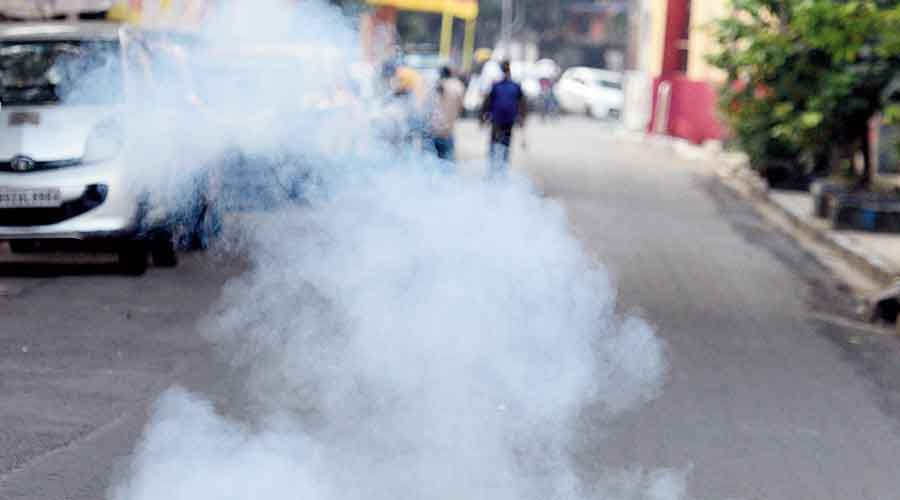The air quality across Kolkata was worse on Kali Puja evening than it was on the evening of last year’s Kali Puja, data available on the website of the Central Pollution Control Board (CPCB) showed.
Bursting of firecrackers started in the early evening and the sound grew louder from 8pm to 10pm. Orders issued by the Supreme Court and the state pollution control board say only green firecrackers could be burst on Diwali, from 8pm to 10pm.
Environmentalists said many firecrackers that were not certified as green crackers were burst as there was hardly any check to determine which were certified green crackers and which were not.
They expressed the fear that the air quality on Friday morning would be poor, following bursting of banned firecrackers well past midnight on Diwali.
This newspaper compared the Air Quality Index (AQI) value of the seven automatic air quality monitoring stations in Kolkata on Thursday with what it was at the same hour on November 14, 2020, the day of Kali Puja 2020.
The deterioration was most prominent in Jadavpur, where the air quality was “moderate” at 8pm last year. At 8pm on Thursday, the air quality was “poor”. The AQI value was 121 last year and 229 this year.
Higher AQI means the ambient air is more polluted, said an air quality expert.
The air was “poor” in Bidhannagar on Thursday, but was “moderate” last year.
The air quality recorded at the station on the Rabindra Bharati University campus on BT Road was “poor” both on Thursday and on Kali Puja evening last year.
Thursday’s quality was, however, poorer — the AQI was 274, compared with 230 last year.
According to the CPCB, “poor” air can cause “breathing discomfort to most people on prolonged exposure”.
“The higher the AQI value, the greater the air pollution at that place. The AQI value is a number arrived at after considering the concentration of the various types of pollutants in the air. Depending on the AQI value, various categories of air quality have been fixed,” said Anumita Roy Chowdhury, an air quality expert and the executive director of the Centre for Science and Environment (CSE), a public interest research and advocacy organisation.
Four other air quality monitoring stations in the city — at Ballygunge, Fort William, Rabindra Sarobar and Victoria Memorial — had moderate air quality on both days, though the AQI was higher this year.
“If a station reports moderate air quality on two days but the AQI value is higher on one of these days, it means the air was more polluted on the day with the higher AQI,” said Roy Chowdhury.
Air of “moderate” quality can cause “breathing discomfort to the people with lungs, asthma and heart diseases”, said the CPCB website.
Residents across the city said they noticed more firecrackers being burst this year compared to last year, but the situation was better than 2019 or the years before.
A resident of Kasba in south Kolkata said he heard sounds of firecrackers bursting in the neighbourhood from 6pm and it went on. “It can be said without doubt that more firecrackers are being burst this time compared to last year,” said Naba Dutta of Sabuj Mancha, a green platform that has been tracking noise norm violation during Diwali and Kali Puja for many years.
